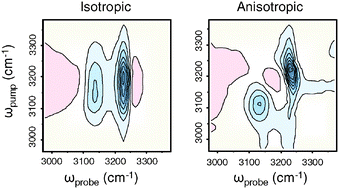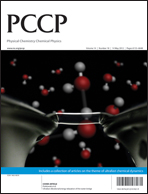The OH stretch line shape of ice Ih exhibits distinct peaks, the assignment of which remains controversial. We address this longstanding question using two dimensional infrared (2D IR) spectroscopy of the OH stretch of H2O and the OD stretch of D2O of ice Ih at T = 80 K. The isotropic response is dominated by a 2D line shape component which does not depend on the pump pulse frequency. The decay time of the component that does depend on the pump frequency is calculated using singular value decomposition (bi-exponential decay H2O: 30 fs, 490 fs; D2O: 40 fs, 690 fs). The anisotropic contribution exhibits on-diagonal peaks, which decay on a very fast timescale (H2O: 85 fs; D2O: 65 fs), with no corresponding anisotropic cross-peaks. Both isotropic and anisotropic results indicate that randomization of excited dipoles occurs with a very rapid rate, just like in neat liquid water. We conclude that the underlying mechanism relates to the complex interplay between exciton migration and exciton–phonon coupling.

You have access to this article
 Please wait while we load your content...
Something went wrong. Try again?
Please wait while we load your content...
Something went wrong. Try again?


 Please wait while we load your content...
Please wait while we load your content...